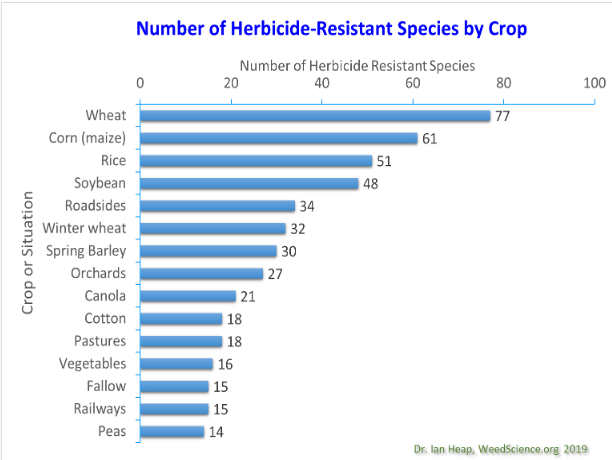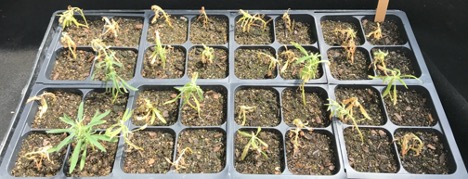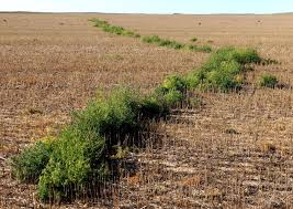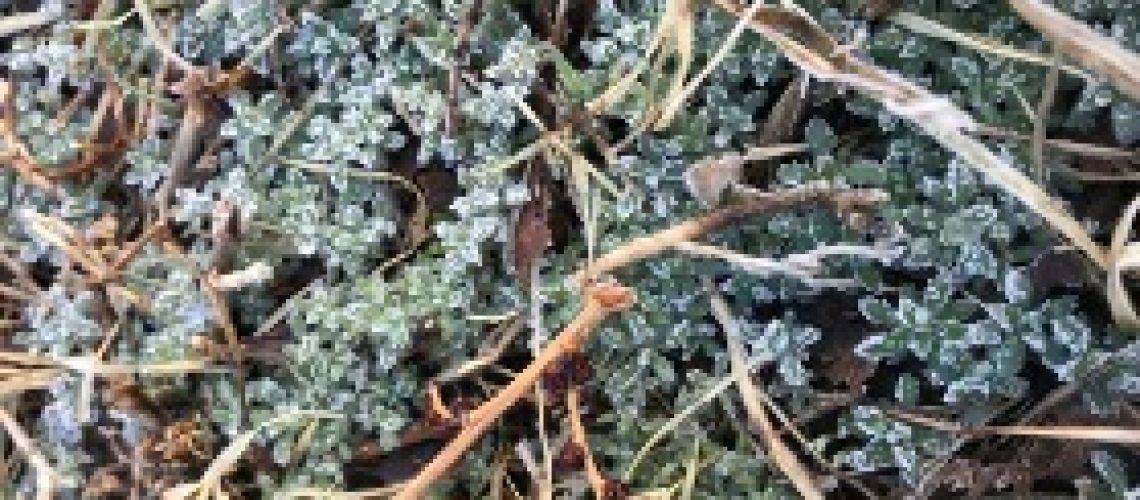Guest Post By Neeta Soni, 2019-2020 Sustainability Leadership Fellow and Ph.D. Candidate in the Department of Bioagricultural Sciences and Pest Management
Colorful, dynamic, beautiful, and unpredictable. Those are the main characteristics that come to my mind when I think about weeds. However, these plants, to a farmer are nothing pretty and they represent a devasting cost to food production.
A simple definition of a weed is a plant that grows where you do not intend them to establish. Weeds compete with crops for space, light, nutrients, and water. They have the ability to take up these resources much faster than crops, which will negatively affect the total yield that can be produced. Weeds also have the ability to rapidly adapt and overcome any stressor such as drought, temperature, and whatever we repetitively do to remove them. Yes, besides growing between concrete cracks and all over our backyard, they also manage to escape control methods such as hand-weeding and herbicide applications in agricultural fields. An interesting example is a grass weed known as red rice that was repetitively pulled by hand from rice fields. After several crop seasons, workers were not able to visually distinguish the weed from the rice, meaning that the weeds that looked like rice were left behind and able to reproduce. A similar story occurred with the recurrent use of herbicides. In order to ensure survival, weeds managed to change their biology to not get killed by the herbicide. Here you can find a database where scientists from all over the world report on herbicide resistance cases in weed species. The problem is serious. These plants can reduce crop yield by up to 40% if they are not removed on time. As a society that is facing climate change impacts and an increase in population, we cannot afford to lose or reduce our ability to produce food.

-So, yes! – It is very difficult to outsmart weed species.
But not all hope is lost. In this “arms race”, we as weed scientists work towards identifying ways that we can win the battle without strengthening our enemy (aka “weeds”). We have learned that there is no “silver bullet” and the best way to tackle them is by diversifying our management practices. Bottom line: let’s put in practice all the ways to remove weeds at the same time. Integrated Weed Management (IWM) is a concept that heavily resonates among growers, researchers, and extensionists. This is a worldwide effort that looks to all kinds of methods to eradicate weeds. Alternatives such as “harvest weed seed control” which aims to remove or destroy the weed seeds at crop harvest have been proven to be effective in Australia. Here in the US, several groups across the country are testing this approach in crops such as wheat, soybean, canola, and corn. So far, the results are promising especially to control weed species that can no longer be eliminated with herbicides. Part of my research was to investigate the potential of implementing harvest weed seed control in Colorado winter wheat farms. The results were very positive, where three weed species showed to have a high potential to be managed using this approach (check out my interview for more details). Based on this outcome we were able to obtain USDA/NIFA funding to further explore this topic and offer solutions for growers in the next couple of years. Other initiatives are the use of targeted herbicide application or tillage by using self-automated robots powered by solar panels that can cruise around the field while the crop is growing. These techniques require an economic investment, but in the long-term, not only will the money be paid off by making your weed control system more efficient, but an important environmental benefit where less herbicide is used will also be achieved. Other benefits in the long-term are that the soil will not require to be disturbed, and weeds will have a harder time overcoming all these techniques at the same time. Cover crops, biological control, and crop rotation are other examples that follow the IWM approach.

An important part of how we can outsmart weeds is to be proactive and work hard on prevention. Weeds manage to produce a tremendous amount of seeds every season.

They have an amazing sensing mechanism to know when, how many will germinate, and how many will remain in the soil for “just in case” emergency later. Hence, it is important to make sure weeds do not get to produce seed, so they do not feed back the seed reservoir. Seed dissemination by air, shoes, and harvesters is also very common and a big issue on how resistant weed populations have spread across the country. This is just an example of how prevention can be achieved and plays a big role in this continuous effort to remove weeds from the fields.
Weeds, unlike crops, have not gone through the same million years of domestication by humans. Because of this, weeds have not forgotten how to survive in rough environments. How to change and adapt to ensure they produce seed and prevail in the ecosystem is in their genetic code. To outsmart a weed takes a combination of skills where we have to think outside the box and combine knowledge with practicality. The challenge is not easy. So, what are your insights on how to outsmart a weed?






